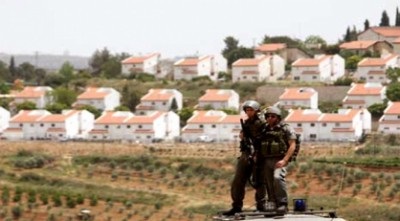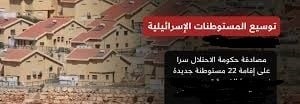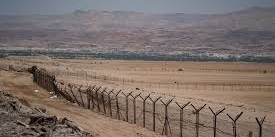By: Madeeha Al-A’raj
The National Bureau for defending land and resisting settlements ( nbprs ) stated in its latest weekly report , that over the time, Israeli PM Bennett declares his adherence to expand settlement policy. He pledged more than once to the heads of the ‘settlement councils’ in the West Bank – Yesha, for the continuation of settlement in the West Bank, including Jerusalem, as was the case during the era of Netanyahu, where Bennett assured the council’s heads that the settlements will continue and that its pace will be the same, and that the settlers’ demands regarding construction plans in the settlements will be examined personally. Within the context and to further reassure the settlers, Bennett indicated that he won’t respond to international pressures, including the US, to calm settlement activities, and that the settlement committee in the Israeli Civil Administration approved, with the encouragement of the government, 31 new plans for building in the settlements, including the so-called isolated settlements and outposts. It is known that the Yesha Council was established in 1980, with the aim of developing the settlement movement and representing the interests of the settlements before the Israeli government and abroad as well, and that Bennett himself held the position of Director General of the aforementioned council between 2009 and 2012.
On the other hand, the occupation authorities continue the Judaization projects and restoration work of the bridge connecting the Al-Buraq Wall courtyard and Al-Aqsa Mosque from the side of the Moroccan Gate, despite the opposition of the Islamic Endowments Department. Al-Buraq, and changing the visual vision of the area surrounding Al-Aqsa Mosque at a time when “temple” groups continue to call on their supporters and a crowd of extremist settlers to donate the price of “redemption of penance” in favor of the storming of the Al-Aqsa Mosque, coinciding with the advent of the so-called “Day of Redemption” which precedes the “Day of Atonement” The ‘Biblical’ religious traditions oblige the religious Jew to pass a rooster or chicken over his head and the heads of his children and recite passages from the Talmud, and then slaughter this bird and donate it, as an atonement for sins, as sins are transferred to the slaughtered rooster.
In Jerusalem, the neighborhoods, villages and towns were isolated from each other and dozens of roads and streets were closed, on the occasion of the so-called ‘Jewish Day of Atonement.’ Some of its neighborhoods were turned into prisons, after closing their main entrances with concrete cubes and iron mounds, especially at the village of Al-Isawiya, Sur Baher, Umm Tuba, and Jabal Al-Mukabber, due to its proximity to the settlements established on its lands.
In another attempt to seize “absentees’ property” in the occupied West Bank, including Jerusalem, the occupation authorities allocated a budget of NIS 100 million for the next five years, to carry out the process of settling properties in Jerusalem, as well as in the West Bank and the 1948, through the so-called The Jewish Nnational Fund ‘Kakal’ is in a dangerous Judaization project that aims to consolidate control the occupied city of Jerusalem, in particular, under the so-called “unified Jerusalem”, with the aim of strengthening settlement and increasing the process of land seizure and the expulsion and displacement of the indigenous population, so that the occupying power controls the properties of the Jerusalemites residing abroad or even outside Jerusalem.
It seems clear that the targeted neighborhoods or areas were not by chance. The occupation government and the so-called Jewish National Fund ‘Kakal’ believe that there are loopholes in those areas that help the occupation authorities and the fund to control the largest area of land through the application of the Absentee Property Law, or the presence of nearby settlements in the area, or the absence of a settlement of land during the Jordanian administration, and that over the 54 years of occupation, in most of the Jerusalem villages and towns that are under the control of the occupation municipality, no land and real estate registration process was conducted, and this means that there is no Structural plans and consequently not granting building permits to residents, and the process of obtaining permits, is a complex bureaucratic process that extends from 10-15 years, forcing residents to carry out unauthorized construction, and often this ends after all the fines, expenses and costs paid to self-imposed demolition or by Occupation bulldozers and bulldozers, and the licensing process in Jerusalem is very expensive, knowing that the licensing fee is between $ 30-50 thousand dollars per apartment. The Absentee Property Law is one of the most dangerous laws passed by the Knesset. Where it dates back to March 1950, and was approved to be the main tool for controlling the properties of Palestinian refugees, and the properties of the Islamic Endowment as well.
List of Israeli Assaults over the Last Week Documented by the National Bureau:
Jerusalem:
- Opening fire at three children near the crossroads of the town of Al-Ram, north of occupied Jerusalem.
- Running over Walid Samir Abu Al-Hawa, 25, causing bruises and fractures to him in the town of Al-Tur.
- Handing notices of seizing every land whose owners did not hand over its ownership papers until the17th of Sept. 2021 in the Deir Al-Sunna neighborhood in the town of Jabal Al-Mukabber.
- Stabbing a Palestinian bus driver while working for state-owned company egged in the occupied Jerusalem.
Hebron:
- Attacking the homes of citizens in the Jaber neighborhood in the city of Hebron, attacking the residents of Al-Shuhada Street, and obstructing their access to their homes.
- Attacking the visitors, worshipers, and employees of the Ministry of Awqaf and Religious Affairs, in the Ibrahimi Mosque in the center of Hebron, forcibly expelled and closed it under the pretext of securing the settlers’ celebration of the “Yom Kippur.”
- Injuring dozens of citizens, including foreign solidarity activists, with bruises and suffocated, arrested others during the weekly anti-settlement protest, in the village of Al-Tawana in Masafer Yatta, south of Hebron.
Bethlehem:
- Uprooting 50 olive seedlings in the Wadi El-Hajjar area from the western side of Kisan village. It should be mentioned that the village of Kisan is subjected to a settlement attack by seizing areas of land, uprooting trees, and preventing sheep breeders from grazing on their lands.
Nablus:
- Attacking the house of Umm Ayman Soufan, in Burin, with stones.
- Bulldozing the roads leading to Sabeeh Mountain, which is threatened by settlements, in the town of Beita, south of Nablus, specifically the roads in the industrial area to prevent ambulances from reaching the area of confrontations on Mount Sabih.
Salfeet:
- Looting concrete mixers and a crane in a plot of land inside the “Al-Balad Al-Gharbi” basin of the Derastia town, west of Salfeet Governorate, and forced them to stop work on the site under the pretext of being in C Area.
 المكتب الوطني للدفاع عن الارض ومقاومة الاستيطان منظمة التحرير الفلسطينية
المكتب الوطني للدفاع عن الارض ومقاومة الاستيطان منظمة التحرير الفلسطينية




